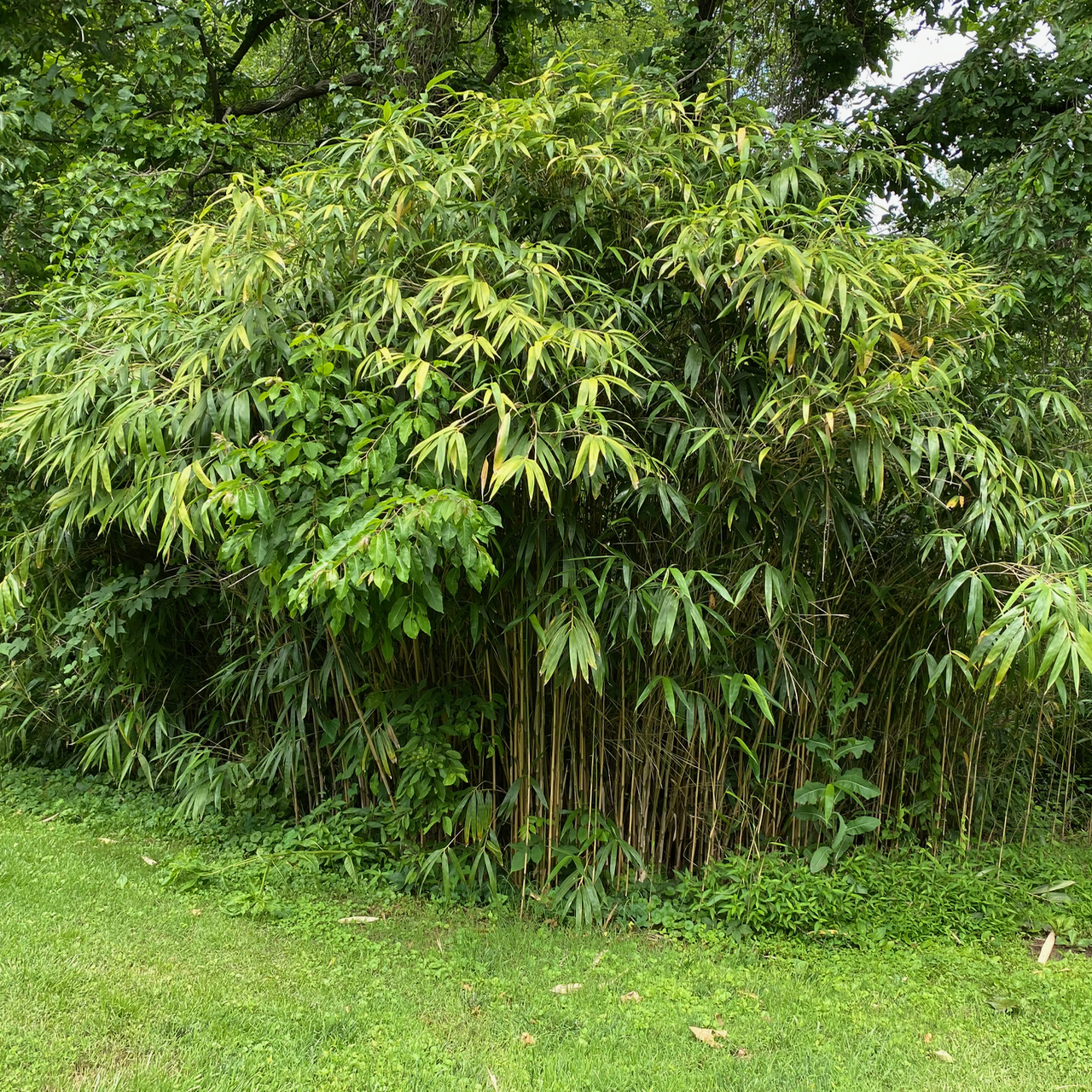Bamboo is another invasive species. Certainly, that is not a surprise. We have been in this business for years. I know that it is very difficult to remove. Somehow, we ended up with a patch of it. The photo above is the initial patch. Within a couple of years (see photo below), it extended over 30 feet. The patch is also quite deep. We probably brought a piece or two back from a job. It rooted and took over. Find out why bamboo is a very poor choice of plants. In my opinion, it should never be considered for any use.

Bamboo – Invasive Species
According to the United States Department of Agriculture National Invasive Species Information Center, golden bamboo is considered an invasive species. The scientific names are Phyllostachys aurea Carrière ex Rivière & C. Rivière. Other common names are fishpole or walking stick bamboo. It was imported to the United States around 1882. Some sources say as an ornamental plant and others say for fishing poles. The characteristics that make it an invasive species are similar to other invasive species. First it grows extremely fast. Some species grow a little over 3 feet in an hour. Second it propagates quickly and efficiently. Third the culms and canopy choke out native species. Fourth it grows in a variety of favorable and unfavorable conditions. Finally, it is difficult to remove. Read more below for specifics about growing patterns and removal. Bamboo was designated as a noxious weed by the Virginia assemble in 2018.
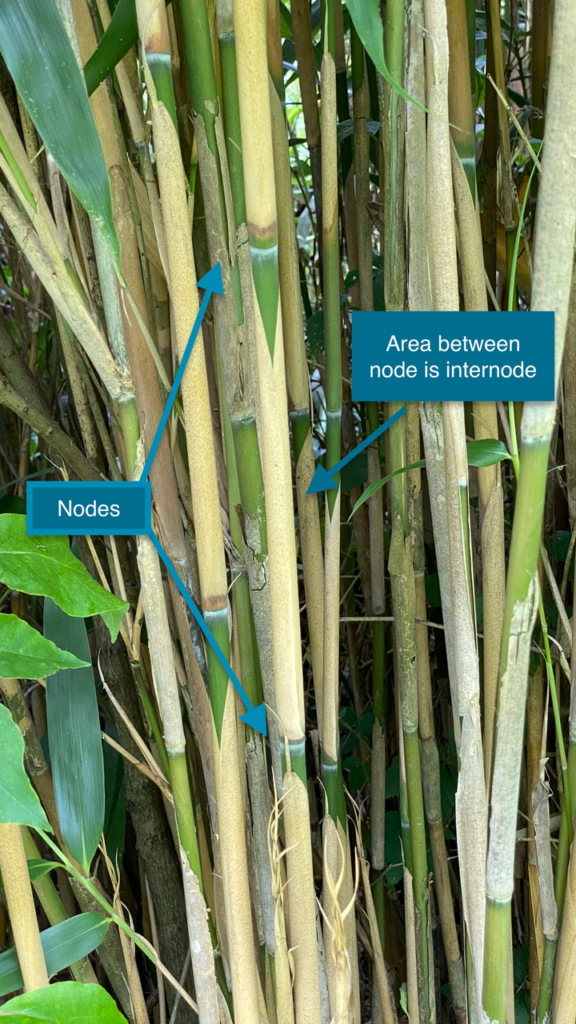
Physical Characteristics – Bamboo Culms & Leaves
Bamboo stems are called culms. They are hollow inside and divided into segments. The divider is called a node. The area between nodes is called the internode. Branches and leaves grow from nodes. The culms grow very close together. Culms and rhizomes form a dense barrier. This prevents native foliage from growing.
Leaves are alternate on the culm. They are 3-10 inches long and can be over an inch wide. The leaves form a dense, significant canopy. Therefore they shade and choke out native foliage. Negative impacts extend to stream biodiversity. Bamboo leaf litter negatively impacts native litter feeding invertebrates causing more collateral damage.
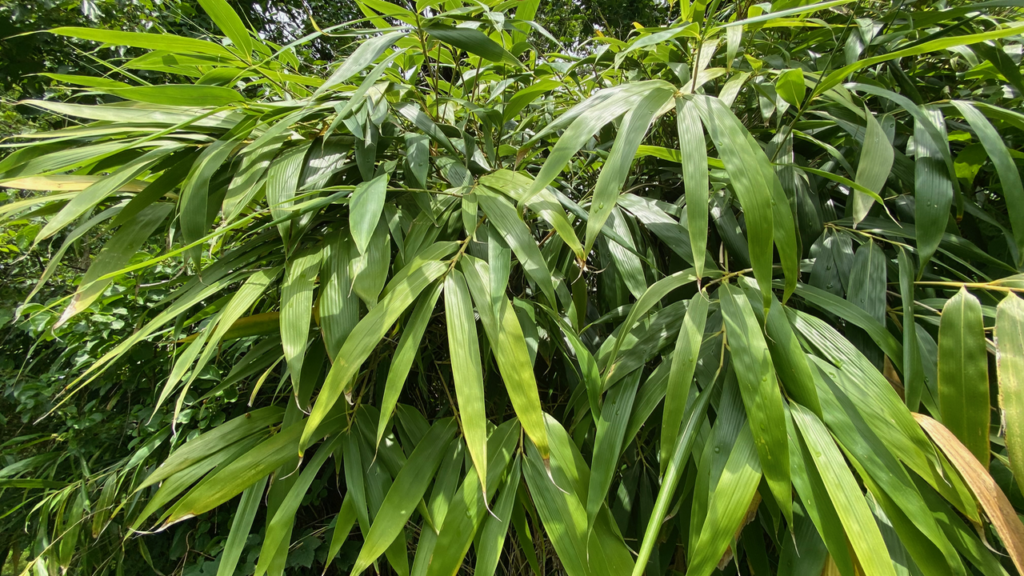
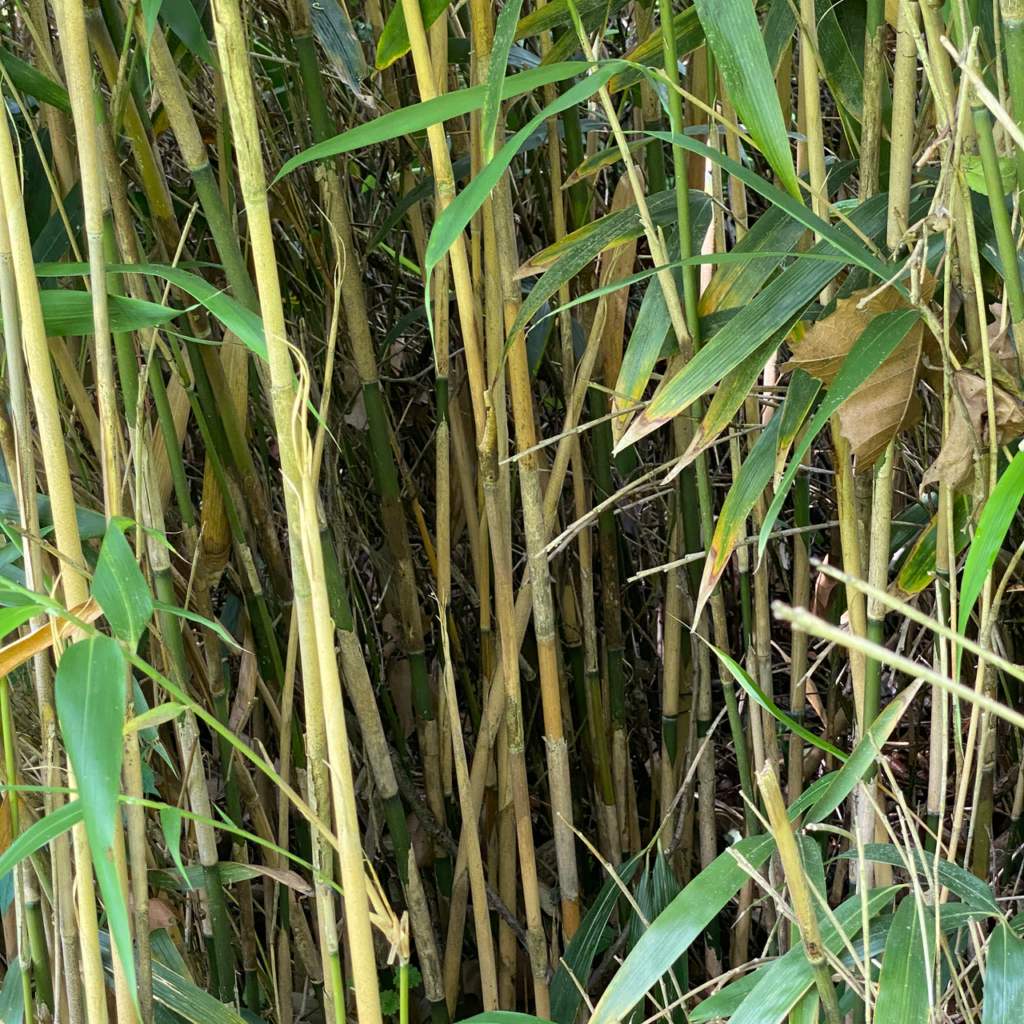
Growing Patterns
There are two main types of growing patterns. Running bamboo grows via underground leptomorph rhizomes. This is the worst type. It grows similarly to Stinging Nettle that I wrote about last week. The rhizomes extend horizontally up to 15’ per year. New stalks grow up and new roots grow down from the rhizomes. The clumping type grows via underground pachymorph rhizomes. These rhizome roots grow in contained clumps. In other words, they extend slowly, so it is less invasive than running bamboo. However, both are eventually difficult to contain.
Removing Running Bamboo
Invasive species are generally difficult to remove. Therefore, the best prevention is to never plant it. There are three main options for removal. First, cut it down. After that, continually mow over it. This is not a permanent fix. It shoots back up from rhizomes easily. The second option is to use an herbicide. Unfortunately, it is difficult to only target bamboo and not desired foliage. Repeated treatments are necessary. As a result, this is not always a successful method for eradication. Also, applying herbicides to large areas is detrimental to the environment. Finally, and the most effective way is to cut down the stalks, grind the roots, and possibly insert a barrier. Please see our Running Bamboo Removal page to find out about the services that we provide.
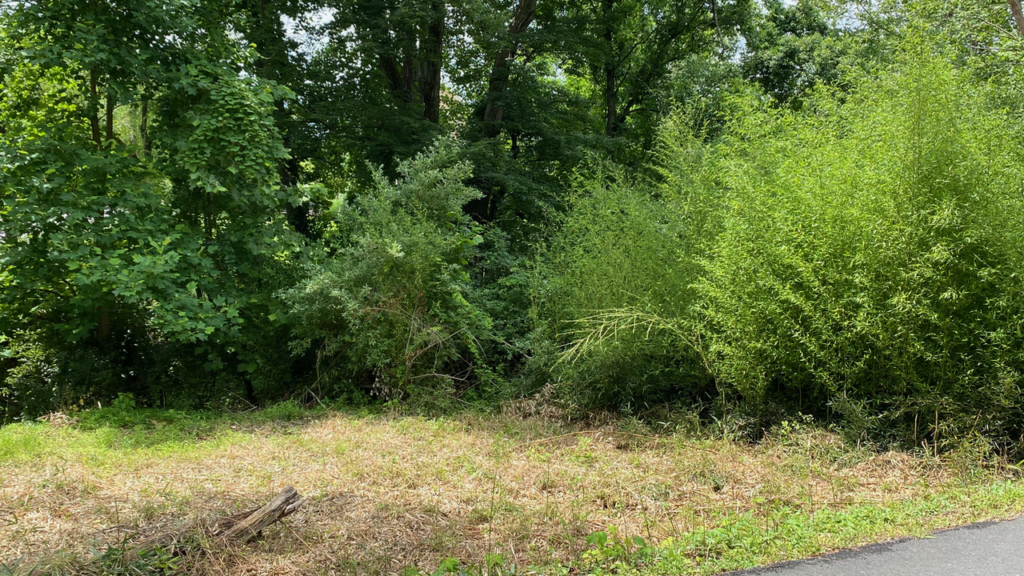
References and Find Out More
First, find out almost everything you ever wanted to know about bamboo at Bamboo Botanicals.
Second Sea Grant at Pennsylvania State University has a nice fact sheet.
Third the USDA National Invasive Species Information Center is also an excellent resource.
Finally, if you live in Fairfax County, this website provides general information about bamboo.
